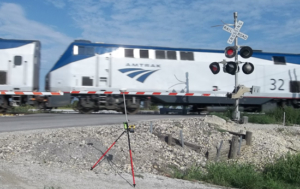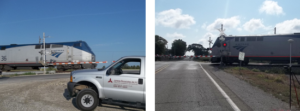Chicago to St. Louis High-Speed Rail
As a subcontractor to HDR Engineering, Juneau provided property surveys for the Tier 3 and Tier 4 portions of the Chicago-St. Louis High Speed Rail Project, which is ongoing. Juneau’s role in the project included determining railroad right-of-way, performing property surveys and preparing premise plats and legal descriptions for 110 parcels acquired for the project.
As a result of the 2004 Record of Decision (ROD), Illinois’ signature passenger rail route, Chicago to St. Louis, was selected by the Federal Railroad Administration (FRA) for $1.1 billion for corridor improvements. These improvements include upgrading and constructing track to 110 miles per hour standards, siding and crossovers, grade crossing surfaces, signals and warning systems, stations, and new high-speed passenger trains.
The Chicago to St. Louis Corridor is 284 miles long, of which, the Union Pacific Railroad (UPRR) portion of the corridor between Joliet and Godfrey (215 miles) is equipped with one track for 182 miles and double track for 33 miles. In addition to the UPRR portion of the track, there are three other sections:
Canadian National (CN) portion of the corridor between Joliet and Chicago (37 miles)
UPRR and Kansas City Southern (KCS) portion of the corridor between Godfrey and East St. Louis (29 miles)
The Terminal Railroad Association (TRRA) portion of the corridor between East St. Louis and St. Louis, MO (3 miles of double track) extends over the Mississippi River Bridge and into the St. Louis Terminal.
This project intends to establish a more balanced modal use of the transportation network by improving rail service. Approximately 99 percent of the 35 million annual trips made in the Chicago to St. Louis corridor are accomplished through automobile and air travel.
The current Chicago to St. Louis corridor operates on only one set of tracks, however, future visions for this corridor include the full build out of an additional second track. The full build out of an additional second track was determined in the Tier 1 Study by combining technical analysis and stakeholder input. The construction of this potential second track is not currently funded.








